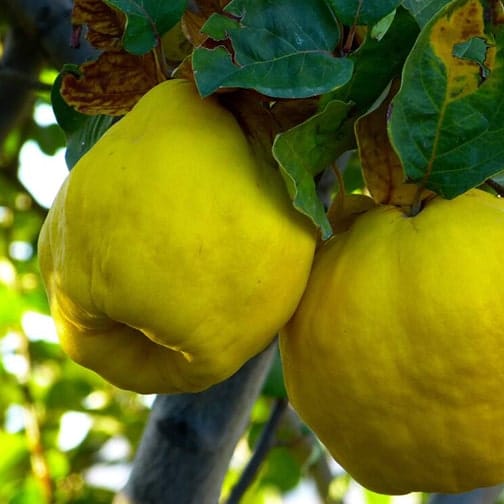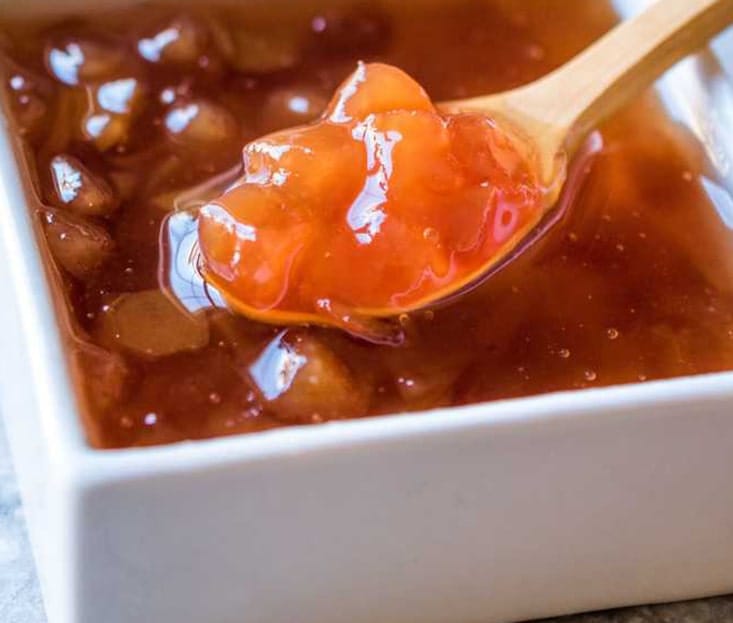
Quince Jam
Quick Access :
General information
General
Information :
Information :
The quince tree grows 5 to 8 m (16 to 26 ft) high and 4 to 6 m (13 to 20 ft) wide. The fruit is 70 to 120 mm (3 to 5 in) long and 60 to 90 mm (2 to 4 in) across. The immature fruit is green with dense grey-white fine hair, most of which rubs off before maturity in late autumn when the fruit changes color to yellow with hard, strongly perfumed flesh. The leaves are alternately arranged, simple, 60–110 mm (2–4 in) long, with an entire margin and densely pubescent with fine white hairs. The flowers, produced in spring after the leaves, are white or pink, 50 mm (2 in) across, with five petals. The seeds contain nitriles, which are common in the seeds of the rose family.

Quince is cultivated on all continents in warm-temperate and temperate climates. It requires a cooler period of the year, with temperatures under 7 °C (45 °F), to flower properly.
Product benefits
Quince Jam
Benefits :
- Containing antioxidants
- Containing vitamins and minerals
- Containing tannins
- Being a very nutritious fruit
- Containing 57 calories
- Being a great source of dietary fiber
How to Produce
How To
Produce :
Quince makes beautiful jam thanks to its deep pink color once cooked. It’s also naturally high in pectin, so it thickens nicely without having to use thickeners. Essentially the principal ingredients used in jam making are simply fruit and sugar. However, depending upon the actual recipe itself, there may be a number of additional ingredients added to the pot, such as spices, ginger and lemon juice (for fruit with little in the way of natural acid). For orange jam the juice of lemon is needed as it is very low acid fruit, whereas half of that will be enough for medium acid fruit, and won’t need any for the high acid fruits. In general, fruit with high pectin will also have high acidity and vice versa.


It is always important that any fruit being used as an ingredient should be clean, fresh, in good condition (not rotten, moldy or overripe) and completely dry. If the fruit is damp or wet, then the water may actually dilute the natural pectin and prevent the preserve from achieving a good set.
Boiling is key to jam-making because it releases a long fibrous compound known as pectin. In jam, pectin forms a mesh that traps the sugary liquid and cradles suspended pieces of fruit. Boiling the fruit will always help to purify and sterilize it, killing off any natural yeast and preventing the fermentation process
Boiling is key to jam-making because it releases a long fibrous compound known as pectin. In jam, pectin forms a mesh that traps the sugary liquid and cradles suspended pieces of fruit. Boiling the fruit will always help to purify and sterilize it, killing off any natural yeast and preventing the fermentation process
Packaging
Packaging :
As far as packaging is concerned, there are various options – cups, glasses, cans, buckets. We can provide quince Jam in each quantity that our client wants, there are no limited in weight and destination or in packed.

